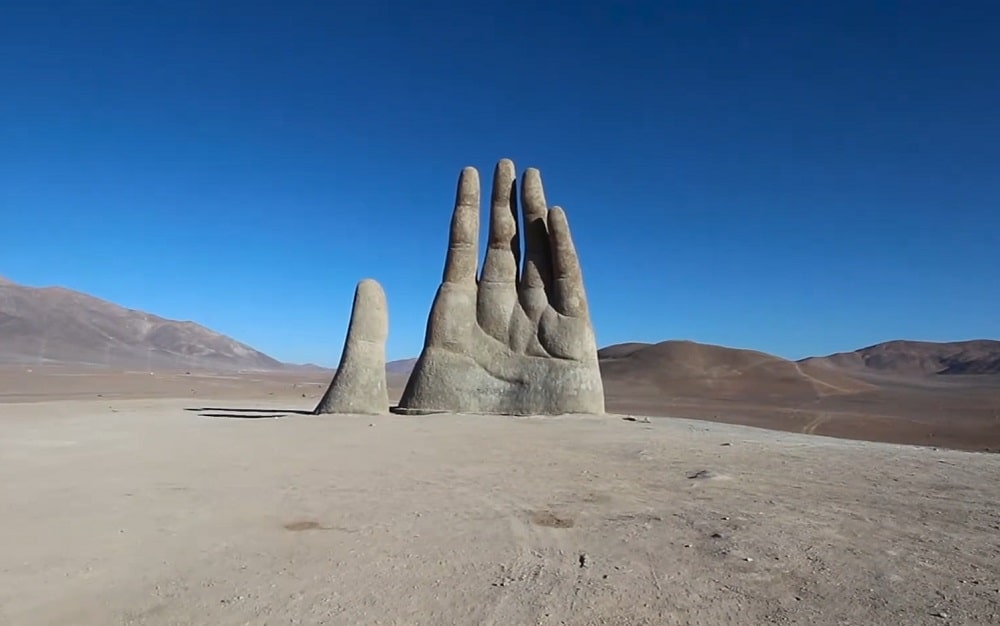The landscapes of the Atacama Desert are typical of places where there is no one to harm the environment, commonly known as the driest place in the world. When you go there, you will see a giant concrete hand from a distance, which adds to the beauty of this place. Years ago, the people there thought of making an artwork in the desert and they made a huge hand out of the ground with the help of cement.
In the Atacama Desert in northern Chile, there is nothing to be seen for miles, rather, pebbles, stones, and mountains of sand are visible everywhere. But despite being a great tourist place, the desert is also known for a strange natural phenomenon, referred to as the "flowering desert phenomenon". After a torrential downpour in 2015, the world's driest desert suddenly turned into a garden full of beautiful colorful flowers, offering a spectacular view covered with pink, purple, and yellow flowers.
Initially, the reason behind this phenomenon was considered to be only heavy rain but this change in Atacama occurred because of "El Nino". A warming phenomenon of ocean waters off the coast of Peru called "El Nino" causes changes in wind direction and speed, affecting the weather cycle. According to researchers, the seeds of these flowers were already present in the desert, and were dormant for many years, but were still alive. Due to heavy rains, these seeds got activated and emerged into the form of plants.
Furthermore, the Atacama Desert is also associated with the Chinchorro culture, the people who were well-known for their funerary practices and detailed mummification, originating from 7000 BCE to 1500 BCE. It was the first known civilization in the world to mummify the dead. Mummies are often found in the desert at a depth of less than three feet from the ground, which archaeologists call the 'Ultimate Survivor' because they are about 2 thousand years older than some of the oldest Egyptian mummies. But these ancient mummies are now somewhere facing the challenges of climate change.














0 comments:
Post a Comment